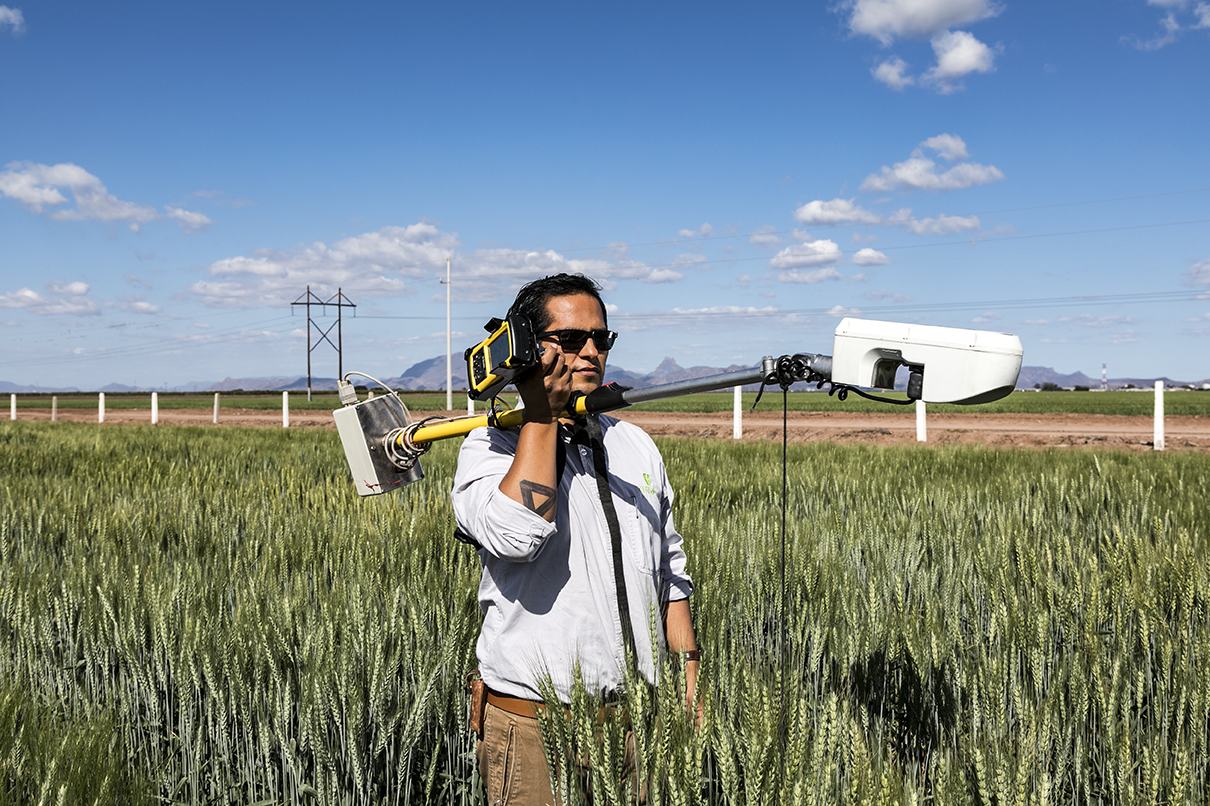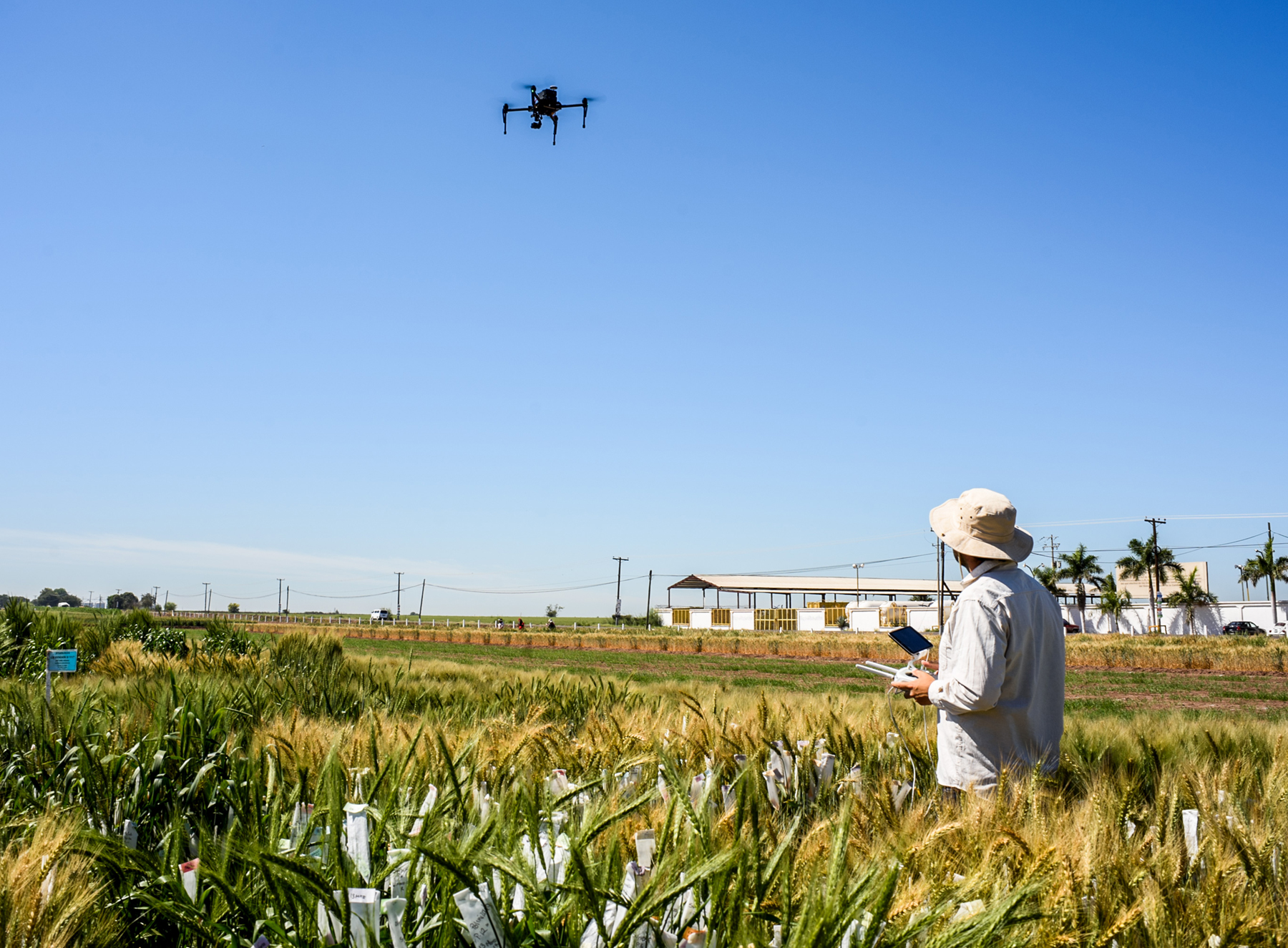March 24, 2020

In crop research fields, it is now a common sight to see drones or other high-tech sensing tools collecting high-resolution data on a wide range of traits — from simple measurement of canopy temperature to complex 3D reconstruction of photosynthetic canopies.
This technological approach to collecting precise plant trait information, known as phenotyping, is becoming ubiquitous, but according to experts at the International Maize and Wheat Improvement Center (CIMMYT) and other research institutions, breeders can profit much more from these tools, when used judiciously.
In a new article in the journal Plant Science, CIMMYT researchers outline the different ways in which phenotyping can assist breeding — from large-scale screening to detailed physiological characterization of key traits — and why this methodology is crucial for crop improvement.
“While having been the subject of debate in the past, extra investment for phenotyping is becoming more accepted to capitalize on recent developments in crop genomics and prediction models,” explain the authors.
Their review considers different contexts for phenotyping, including breeding, exploration of genetic resources, parent building and translations research to deliver other new breeding resources, and how these different categories of phenotyping apply to each. Some of the same tools and rules of thumb apply equally well to phenotyping for genetic analysis of complex traits and gene discovery.
The authors make the case for breeders to invest in phenotyping, particularly in light of the imperative to breed crops for warmer and harsher climates. However, wide scale adoption of sophisticated phenotyping methods will only occur if new techniques add efficiency and effectiveness.
In this sense, “breeder-friendly” phenotyping should complement existing breeding approaches by cost-effectively increasing throughput during segregant selection and adding new sources of validated complex traits to crossing blocks. With this in mind, stringent criteria need to be applied before new traits or phenotyping protocols are incorporated into mainstream breeding pipelines.
Read the full article in Plant Science:
Breeder friendly phenotyping.
 A researcher flies a UAV to collect field data at CIMMYT’s experiment station in Ciudad Obregón, Mexico. (Photo: Alfonso Cortés/CIMMYT)
A researcher flies a UAV to collect field data at CIMMYT’s experiment station in Ciudad Obregón, Mexico. (Photo: Alfonso Cortés/CIMMYT)